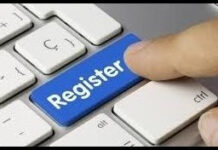Lake property owners continue to be confronted with adverse environmental challenges, regulatory constraints and rising real estate taxes caused by inflated property valuations. They seek opportunities for education on the issues and collaboration with others in the lake community. Events structured to bring lake stakeholders together are vital to foster better understanding and more efficient coordination to address issues. Opportunities greatly reducing the complexity and expense of administering quality events are now available to those with only moderate resources and technical aptitudes.
Why Have Events
Success in promoting an idea or a movement is achieved when like minded people join together with a consensus of thought and convert their enthusiasm into action. The Components of a successful Lake Stewardship Program are Activism, Organization and Data. The logistics involved with bringing people together has historically been an arduous undertaking involving complexity and expense. New tools have been developed that have been proven to provide valuable assistance in organizing and managing group events at a nominal cost. The approach is appropriate for small to large projects.
Event Types
There are many reasons to organize and administer events. Reasons can range from inviting residents of a Beach to a Lake Association annual meeting to the assembly of lake property owners from a six-county region for an Aquatic Invasive Species (AIS) scientific research symposium. Event administration can be used for Meetings, Seminars, Workshops, Webinars, Bus Tours or any purpose where an organized event procedure is desired.
Event Registration Systems
A web search of event registration systems will show that there are several to choose from. They often include online features of offering Registration Form templates, one-click registration access, registration confirmation to the registrant and registrant tracking. The online Registration Form normally includes general information of the who, what, when, where about the event and asks for registration fields to be filled in. These fields will include, at least, name and email address but are customizable to ask for more items. When registrants click on SUBMIT their information is automatically added to a Registrant Database Spreadsheet. The database is used to send event updates and additional information to registrants prior to the event and to help event administrators in planning for the event.
The prospective registrant gets to the Registration Form via a URL web address link provided by the Event Registration System. The link is either embedded in buttons on electronic media (E-Newsletters, websites, social media, etc.) or in QR Codes that can appear both in electronic media or hard copy printed flyers or posters. QR Codes are easily created from URL link addresses. Most cell phones have the ability to bring up the Registration Form by pointing the camera to the QR Code.
In the absence of a direct electronic link or QR Code access to the Registration Form, a telephone number to an Event Committee member can be used for the Committee Member to electronically enter the registration.
Event Advertising
How do you let your audience know about the event? Many media forms are available. Most common are newsletters, websites, social media, email campaigns, posters, news releases, radio and TV.
As many media forms as possible should be employed. The frequency of advertising should be strategically managed. An old axiom says that “Repetition Makes Reputation”. It was originally coined by Elizabeth Arden. It is normally accepted practice to include notices among other articles in monthly newsletters for several if not many issues. A pragmatic schedule for E-Reminders is to send one a month in advance and another one a week in advance of the event.
A message must be repeated enough times for the target audience to notice and engage – but not so many times that it becomes annoying
Promotion pieces should be appropriately prepared for use for various advertising media. Link Buttons used in electronic media (E-Newsletters, websites, email campaigns, social media, etc) are not useful on printed media. Direct registration from posters, flyers and other printed media can be accomplished using a QR Code.
Reaching Out to Prospective Attendees
Electronic media forms utilizing email addresses present a unique opportunity for advertising events. Organizations that publish E-Newsletters have not only the newsletter to advertise the event but also have the emails to target promotion of the event with separate, specific emails. Besides these email databases there are numerous public domain databases that can be obtained.
There are many opportunities to reach targeted segments of populations using postal addresses. Quick and immediate event registration using QR Codes is accomplished from Postcard Campaigns driven from Lake Property Owner Directory Listings that can be obtained from public county data. Postal communications are especially appropriate when pursuing Lake Improvement District (LID) (See PUBLIC HEARING) status. Integration Communications Solution Scenarios illustrates how maximum effectiveness can be obtained combining multiple forms of media outreach.
At The Event
When attendees arrive at the event they should be welcomed and checked in. Checking in includes recording their attendance, receiving an event agenda and program and receiving a name tag.
The Registrant Database Spreadsheet provides information that can be used to automatically generate the name tags. The Avery 5140 name tag utility is a free program to print name tags for all of the registrants in the Registration Database Spreadsheet.
Event Follow Up
Reconciliation of the Registrant Database Spreadsheet and the attendee check-in data can be used:
-To survey comments and suggestions from attendees
-Offer additional information
-To invite attendees to future events
Sample Shoreline Restoration Bus Tour Event Flyer
Sample Starry Stonewort Bus Tour Event Flyer
Sample AIS Research Update Event Flyer
Sample Starry Stonewort Bus Tour Survey Responses
Sample AIS Research Update Survey Responses
For detailed information or assistance with an event contact John Kruse

















